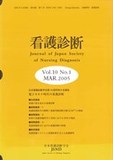Japanese
English
- 有料閲覧
- Abstract 文献概要
- 参考文献 Reference
看護部門に稼働中および導入予定の電子カルテに関する全国実態調査を,看護実践用語の使用に焦点を当てて行った.400床以上の734医療機関に調査票を配布し,322から回答があり,192医療機関を分析対象とした.結果,看護部門への導入のピークは2003~2006年であった.看護部門の電子カルテは,約5割が医療機関全体の情報システムの一部として共有されていた.また電子カルテシステムの多くは看護過程支援システムであり,看護実践および看護記録の部分が電子化されようとしていることも判明した.電子カルテの情報収集枠組みはゴードンとNANDAで7割近くを占めていたが,看護診断名についてはNANDAがほぼ7割と多かった.これらの入力方法については,テンプレートとフリーテキストの両方の使用が多く,看護師の思考過程が重要視されていることも明らかとなった.電子カルテに関して困っている問題についても多数の回答があり,かなりの問題が存在していることも推測された.
The Computer-Based Nursing Records (CBNR) which were used now or were planned to be used further at clinical nursing setting in Japan were investigated. This investigations were focus on analysis of terminology about nursing practice. The questionnaires were sent to 734 hospitals which had more than 400 beds, then 322 hospitals were completed. 192 hospitals's questionnaires of those were analyzed. As a result, CBNR were introduced from 2003 to 2006 mainly. 50%of CBNR were shared as a part of the Integrated Medical Information System. Most of CBNR were Nursing Process Support System. Then nursing practice became to be computerized. The framework of both NANDA and Gordon was used at 70%of CBNR, but the nursing diagnosis label of NANDA were only used at seventy percentages of CBNR. Input methods of CBNR were used both the template method and the free-text method. So thinking process of nurses was viewed as an important. By this investigation, it was supposed that CBNR had very difficult and complex problems.
Copyright © 2005, Japan Society of Nursing Diagnosis. All rights reserved.


